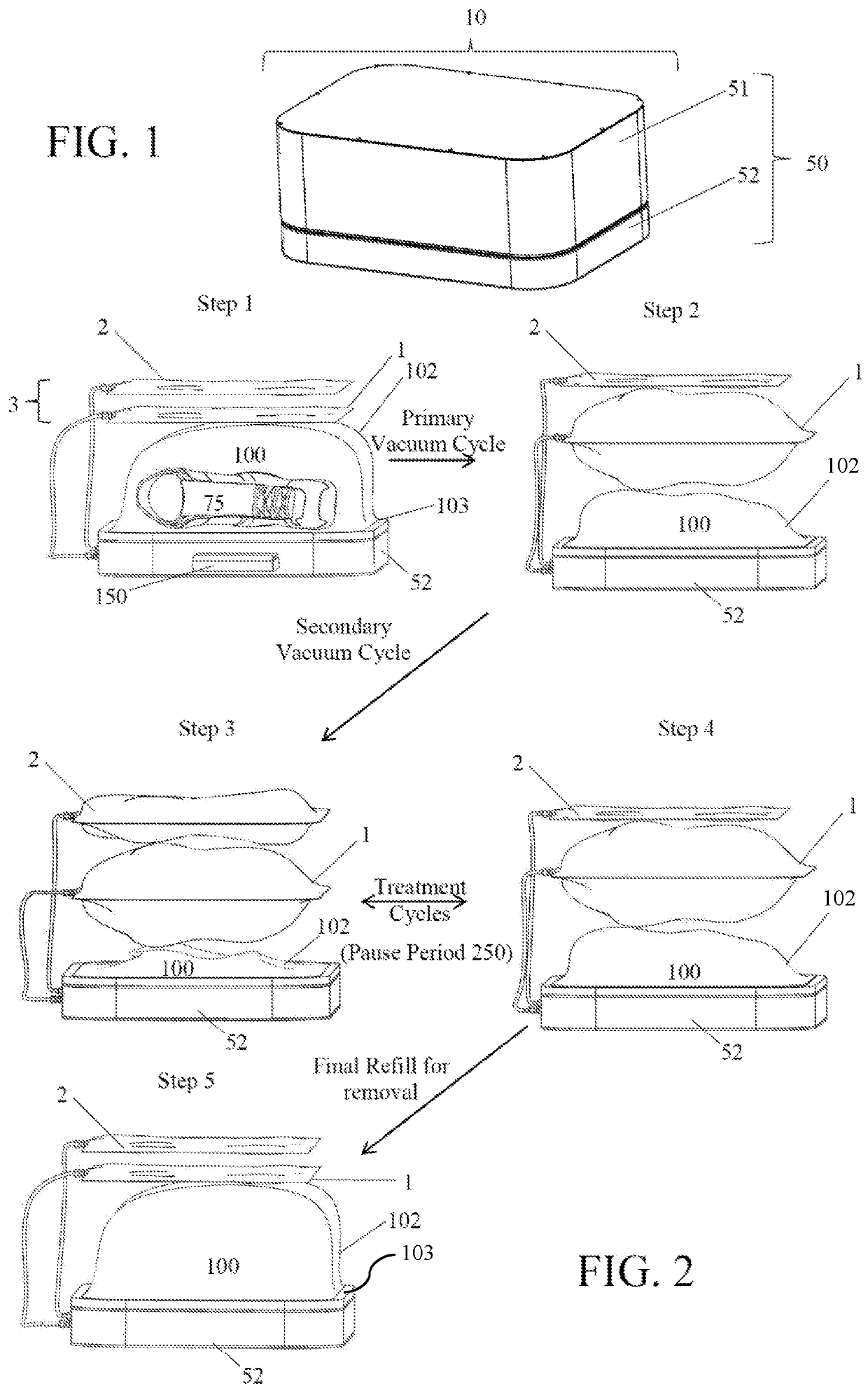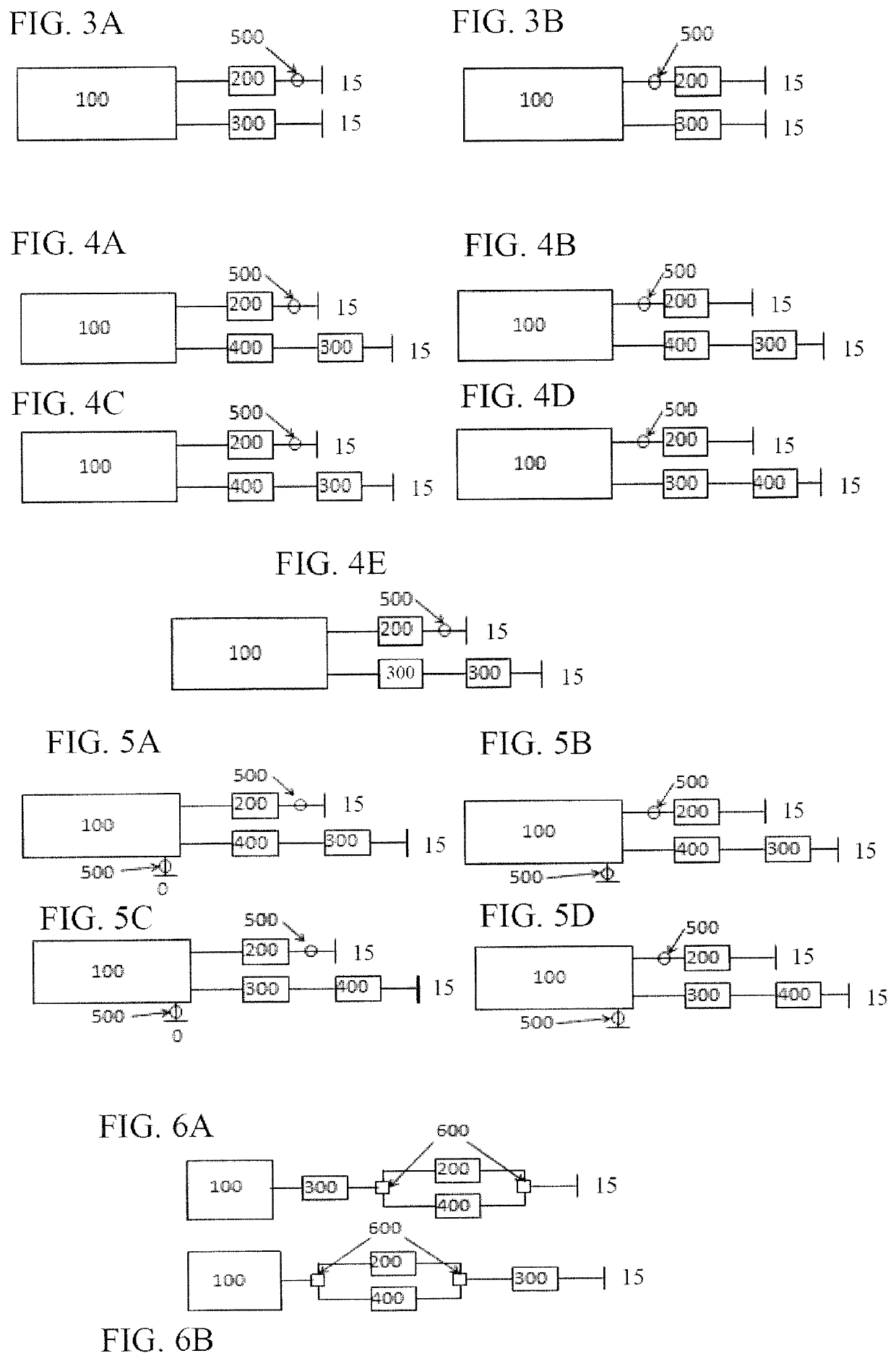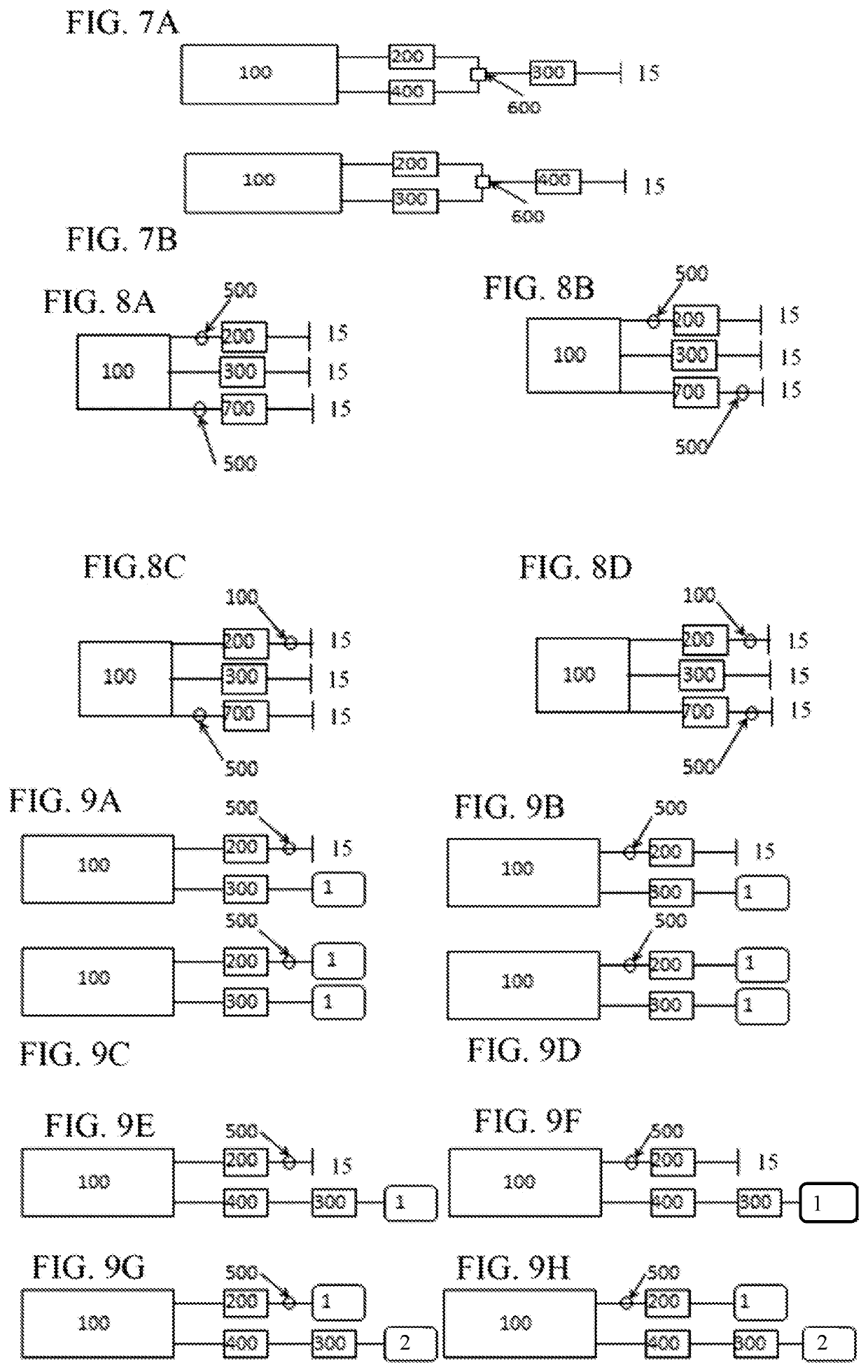Plasma treatment device and method of treating items
a treatment device and treatment method technology, applied in water installations, disinfection, construction, etc., can solve problems such as respiratory irritation, health problems, and ineffectiveness of standard plasma sterilization devices, and achieve the effects of reducing the risk of respiratory irritation, and reducing the effect of radiation
- Summary
- Abstract
- Description
- Claims
- Application Information
AI Technical Summary
Benefits of technology
Problems solved by technology
Method used
Image
Examples
Embodiment Construction
[0040]The subject invention pertains to devices and methods for sterilization of items. More specifically, the subject invention provides embodiments of a plasma treatment chamber capable of sterilizing items placed therein. In specific embodiments, the treatment chamber is capable of being at least partially conformed to the shape of the item, so as to reduce the volume of plasma necessary to sterilize the item.
[0041]The subject invention is particularly useful for sterilizing and, in particular, controlling or eliminating odors on household or personal items, in particular, porous items or items of irregular shape, in which standard aeration or sterilization procedures may be less effective.
[0042]The terms “plasma” and “plasmas” as used with regard to the subject invention are merely for literary convenience. The terms refer to the highly reactive ions, atoms, and molecules—regardless of physical state—generated by an electric current or a coronal discharge.
[0043]The term “air” an...
PUM
| Property | Measurement | Unit |
|---|---|---|
| volume | aaaaa | aaaaa |
| volume | aaaaa | aaaaa |
| volume | aaaaa | aaaaa |
Abstract
Description
Claims
Application Information
 Login to View More
Login to View More - R&D
- Intellectual Property
- Life Sciences
- Materials
- Tech Scout
- Unparalleled Data Quality
- Higher Quality Content
- 60% Fewer Hallucinations
Browse by: Latest US Patents, China's latest patents, Technical Efficacy Thesaurus, Application Domain, Technology Topic, Popular Technical Reports.
© 2025 PatSnap. All rights reserved.Legal|Privacy policy|Modern Slavery Act Transparency Statement|Sitemap|About US| Contact US: help@patsnap.com



